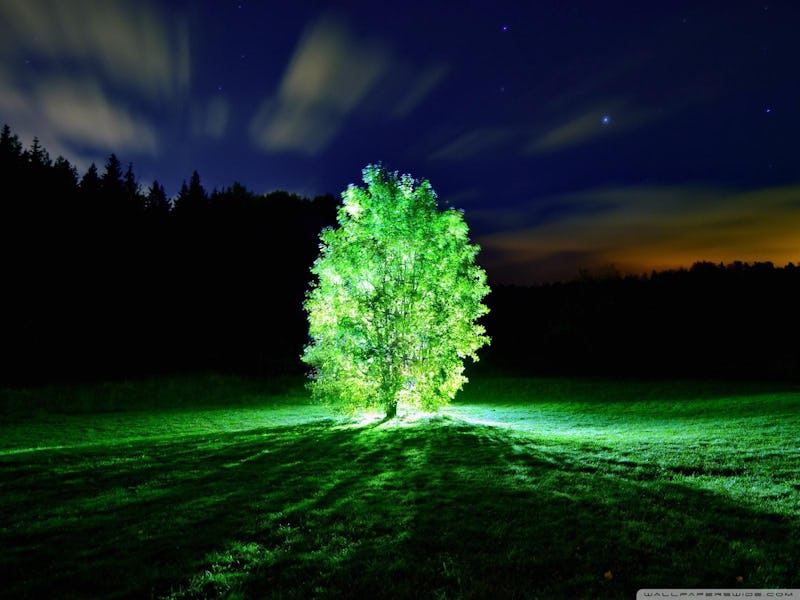Golf Industrial Complex Loves Bioluminescent Trees, Can Bankroll Bio-Engineering
Night golf might save the game in America.

Golf in America is big business, with an estimated value of over $70 billion around the country, but in recent years it’s been slipping. Younger Americans have shown less interest in golf than their parents, and the number of golf courses in America is at a record low following a spate of closings during the recession. No wonder then that the industry is looking to innovate and is grabbing at new ideas. The latest? Bio-engineered glowing trees.
Kermit Zarley, known to a generation of golf fans as “Moon Man,” suggested the unique synthesis of sport and science in a blog post that was soon addressed (favorably) in Golf Digest:
Someday, in perhaps the not-too-distant future, golf may be played at night around the world on golf courses that produce their own natural light from trees, bushes, and maybe even the grass. Of course, it depends on how much light they produce as to whether or not idea will succeed. If it happens with grass, bring back colored golf balls!
For the team behind the Glowing Plants Kickstarter that raised almost half a million dollars to produce plants that are bio-engineered to give off light, Big Golf represents a potentially game-changing patron. It’s a roughly $75 billion a year industry that is desperate to try out new technologies and, thanks to payoff from club engineering, isn’t afraid to invest in engineers.
Needless to say, it requires less light to make a golf course visible at night than a highway, which was the original aim of the Kickstarter project. And, as Zarley notes, trees, bushes, and grass could all have the glowing genes implanted, converting the fairway into a futuristic dreamscape of luminescence.
The most significant obstacle for golf courses, and anyone interested in using the new technology, will be overcoming environmental concerns. The spread of bioluminescence into local ecosystems would be very pretty and horribly damaging. Two organizations, Friends of the Earth and the ETC, even petitioned Kickstarter and the Agriculture Department to remove the project on the grounds that it “will likely result in widespread, random and uncontrolled release of bioengineered seeds and plants produced through the controversial and risky techniques of synthetic biology.”
This isn’t the sort of concern the golf industry, which has a checkered environmental record — think about the water consumption — takes seriously.
There are currently 15,500 golf courses in the United States, though the number has been declining by about 100 per year for the last decade. Night golf would give golf lovers, the industry’s bread and butter, even more time to indulge their passion. The casual golfer may come out at night once or twice for the spectacle of a glowing course, but the hardcore users who crave a round all throughout the week may very well find themselves playing links after dark whenever they can — be it workday or weekend.
The Glowing Plants team may not have foreseen that it would be golf that would make them big time. But when the technology is ready, if they can take courses to a 24/7 schedule, the interest may very well be there; and the money as well.